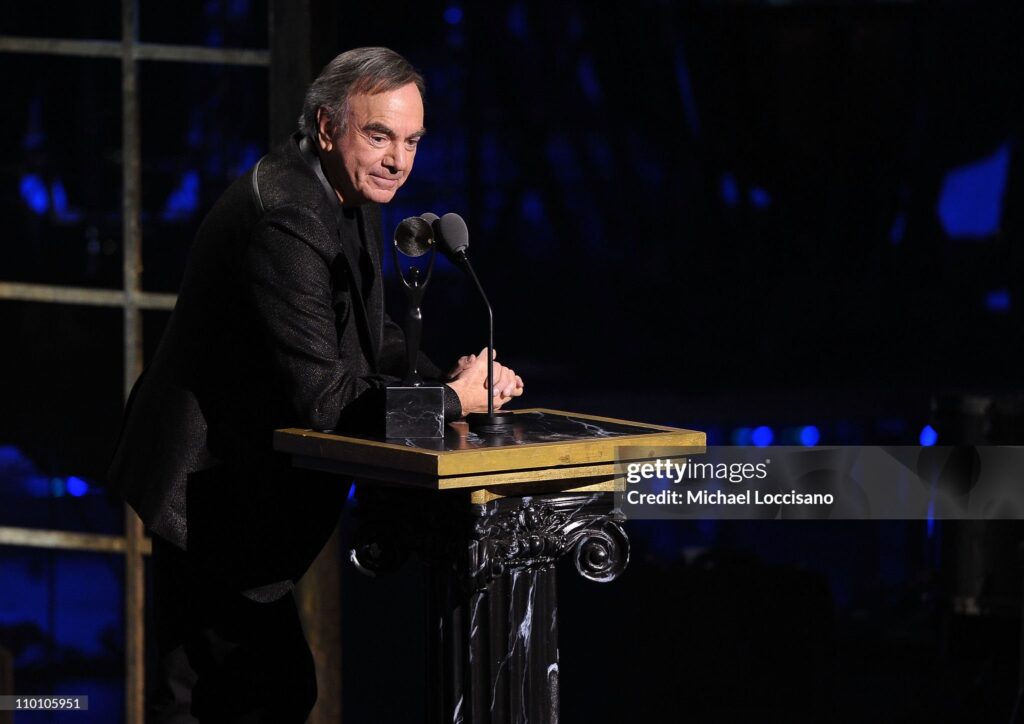
“Brother Love’s Travelling Salvation Show”: A Vivid Tapestry of Hope, Theatricality, and the Enduring Human Search for Redemption
For those of us who remember the late 1960s, a time of profound societal shifts and burgeoning musical landscapes, certain songs stand out not just as melodies, but as fully formed narratives, transporting us to another place and time. Among these unforgettable sonic journeys is Neil Diamond‘s evocative masterpiece, “Brother Love’s Travelling Salvation Show”. Released in 1969, this powerful and uniquely American anthem quickly captured the public’s imagination, climbing the charts to a respectable #22 on the Billboard Hot 100, solidifying Diamond‘s reputation as a master storyteller and a singular voice in popular music.
The genius of “Brother Love’s Travelling Salvation Show” lies in its deeply personal yet universally resonant origins. Neil Diamond, ever the keen observer of the human condition, drew inspiration from the tent revival meetings he had witnessed in his youth, particularly in the vibrant, bustling boroughs of Brooklyn. These weren’t merely religious services in the traditional sense; they were spectacles, community gatherings brimming with fervent emotion, a fascinating blend of entertainment, showmanship, and profound spiritual seeking. Diamond wasn’t necessarily embracing the specific theological doctrines, but rather he was captivated by the raw human drama unfolding before him – the power of a charismatic figure like “Brother Love” to command attention, to offer solace, and to ignite a spark of hope in a congregation hungry for it. It’s a narrative piece, almost cinematic in its scope, painting a vivid picture with every lyric.
At its core, the song is a vibrant, almost tactile tableau of this distinctly American phenomenon. It paints a picture of a traveling preacher, the eponymous “Brother Love,” who brings his message of hope and salvation to dusty, weary towns across the land. The lyrics are rich with imagery and sensory details: “Brother Love’s got a show,” “a little tent on the ground,” “a little joy and a little bit of sound,” and the fervent “amen” that punctuates the air. It’s less about strict religious dogma and more about the feeling of redemption, the communal catharsis, the shared experience of seeking something greater than oneself. The song brilliantly captures the theatricality inherent in such gatherings, where performance and genuine spiritual yearning intertwine, illustrating how a powerful voice and a compelling narrative can move mountains within the human spirit. It speaks to the universal human need for belonging, for purpose, for a balm for weary souls – a need as relevant today as it was half a century ago.
For those of us who lived through those halcyon days, hearing “Brother Love’s Travelling Salvation Show” again is like stepping into a time machine. It conjures images of simpler days, perhaps summer evenings spent with the car radio playing, or the collective spirit of an era trying to find its footing amidst rapid change and social upheaval. It reminds us of a time when music could truly transport you, not just with a catchy melody, but with a fully formed world, a character, and a profound emotional landscape. Neil Diamond had an unparalleled knack for that, didn’t he? He tapped into something deeply American, a blend of earnestness and showmanship, a testament to the enduring power of a good story well told.
What makes this song endure, resonating with successive generations while stirring powerful memories for older listeners? It is undoubtedly Diamond‘s masterful storytelling, his uncanny ability to craft a character and a scene so vivid you can almost feel the dust under your feet and hear the fervent “amen” from the crowd. It’s a testament to his unique blend of folk, pop, and rock, always infused with that distinctive, gravelly vocal delivery that became his signature. The song, from the album aptly titled “Brother Love’s Travelling Salvation Show” (though often remembered by its inclusion of “Sweet Caroline”), became a cornerstone of his early career, showcasing his narrative prowess long before his later anthems became staples of radio. It’s a piece that speaks to the enduring power of hope, even when delivered from a makeshift stage under a canvas tent, reminding us that the search for connection and meaning is a timeless human endeavor.
So, as the opening chords swell and Neil Diamond’s voice invites us once more into Brother Love’s world, we’re not just listening to a song; we’re revisiting a memory, a feeling, and a profound observation on the human spirit’s eternal quest for light. It’s a timeless hymn to hope, delivered with all the passion and theatricality of a true showman, leaving an indelible mark on the soul.